#South and North Indian styles of music
Text
me vibing to the absolute, most broad spectrum of music humanity can conjure

#this is normal...right :')#electroswing#my little pony music#Go_a#Ukrainian electrofolk#every sad song you can imagine#death metal#Barbie#little richard#taylor swift songs go so hard too#full blues#marching bands#piano playlists that last for hours#country songs <3 🤠#bread#bongos#South and North Indian styles of music#god dang man I love music#“POP” OF COURSE!!!#many many musicals#i cannot even list all the ones i listen too. Legit
459 notes
·
View notes
Text
Vedic Astrology Observations
Uttarashada natives often have very mongoose like features (esp face shape) since mongoose is its yoni animal. Often times these natives have a very small head.
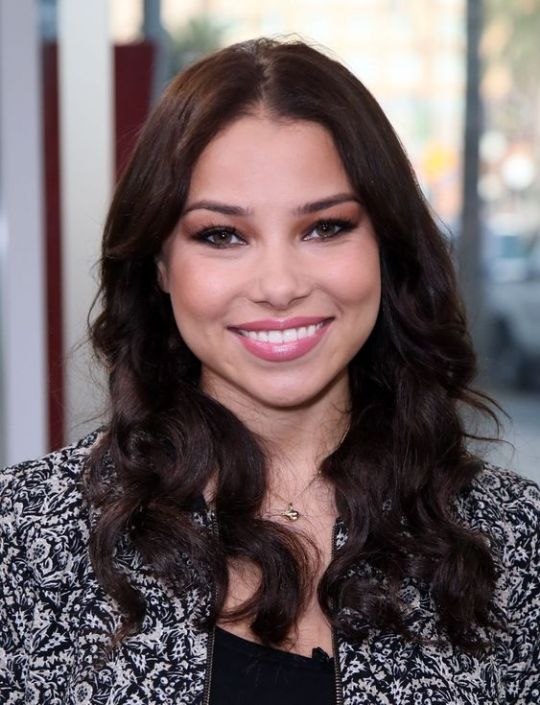

Jessica Parker Kennedy is an Uttarashada Moon


Jennie is UA sun & Jane Levy is UA moon. Notice how they both have a similar eye shape and tapered chin.
2. Punarvasu girlies have such doll like faces. Punarvasu is considered the most feminine nakshatra and I think that impacts the physiognomy of its natives, giving them very cute, dainty, hyper feminine features.


Isabella Moner & Billie Lourd are both Punarvasu sun


Both Karina & Miranda Kerr are Punarvasu moon
3. Hasta Moon women are celebrated for their femininity in the world of entertainment. Since Hasta is ruled by the Moon, these natives are endowed with pleasant demeanour and natural vibrancy.
Dita Von Teese, who is known for emulating a hyper feminine 1930s starlet glamour, has Hasta sun & mercury (her moon is in another feminine nak of Mrigashira while her Ketu resides in yet another feminine nak of Punarvasu)
Bae Suzy, who is known as "First Love of the Nation" in South Korea, because her youthfulness and innocence reminds people of their "first love" has Hasta sun.


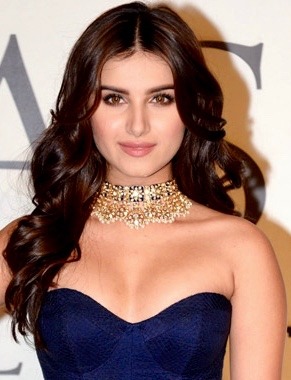
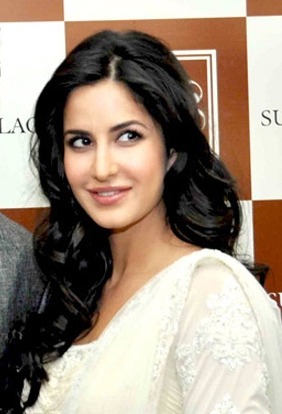
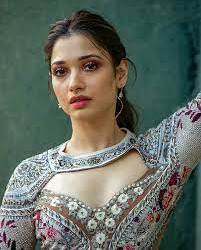
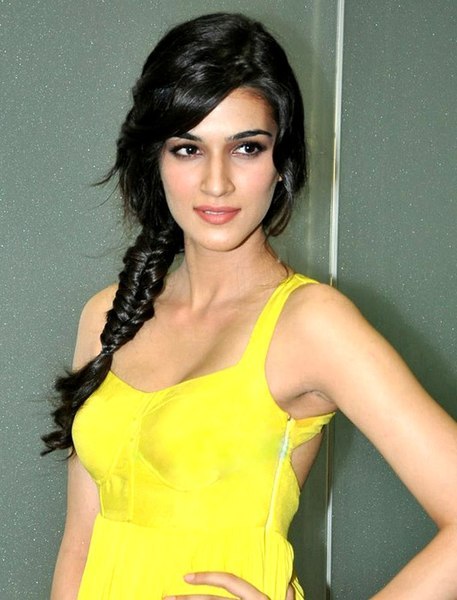
A lot of Bollywood actresses have big 3 Hasta placements, Katrina Kaif, Kriti Sanon, Tamanna Bhatia and Tara Sutaria are all Hasta moon.
(I'll probably make a separate post about this but these women fit North Indian beauty standards and Moon dominant women are always considered the North Indian ideal)
(Notice how all of them have slightly thin long noses and big-ish foreheads and an elongated eye shape?)
Anne Hathaway, Emma Stone, Ariana Grande, Kate Winslet, Karlie Kloss, Anya Chalotra, Lili Reinhart, Kristen Bell, Isabelle Adjani are all Hasta moons and most of them are known for their grace and elegance, while others are known for their girl next door persona.
4. Uttarashada & Purvashada natives are drawn to grandness, luxury and big gestures. In music, I've noticed how many musicians who make music that synthesizes and integrates many diverse sounds, genres and perhaps cultural influences often have Uttarashada placements.
Ryuichi Sakamoto, who often mixed electronic music with African, Chinese, Indian (and many others) music and was known for his "East Meets West" style had Uttarashada sun.
Daft Punk, the French electronic music duo is also known for mixing funk, synth pop, techno, disco and other genres with electronic music. The duo consists of Thomas Bangalter, who has Purvashada Sun, Uttaradhada Mercury & Venus, and Guy Manuel de Homem Christo has Uttarashada Venus.
Cher, who was also known for working across genres has Purvashada moon.
Damon Albarn, who created the virtual band Gorillaz has Uttarashada moon.
Bjork who is known for her unique music has Purvashada Venus
5. A lot of musicians who have a robotic/virtual reality/futuristic concept often have Uttara bhadrapada, Punarvasu and Revati placements.



Guy from Daft Punk is UBP rising with Punarvasu saturn.
Damon Albarn who created the virtual band Gorillaz has UBP sun, Revati saturn amatyakaraka.
Grimes, known for her aliencore, cyberpunk sound/aesthetic has UBP sun
6. Punarvasu natives often make very airy,soft, gentle, "glam" music. They're often very synth heavy and very inspired by 80s esque retro pop. Kali Uchis who has Punarvasu sun, Dua Lipa, Chaka Khan and Mariah Carey who have Punarvasu moon are good examples.

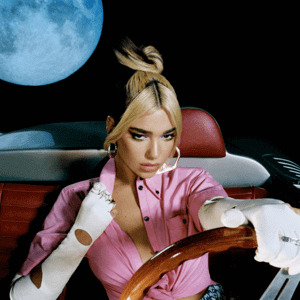

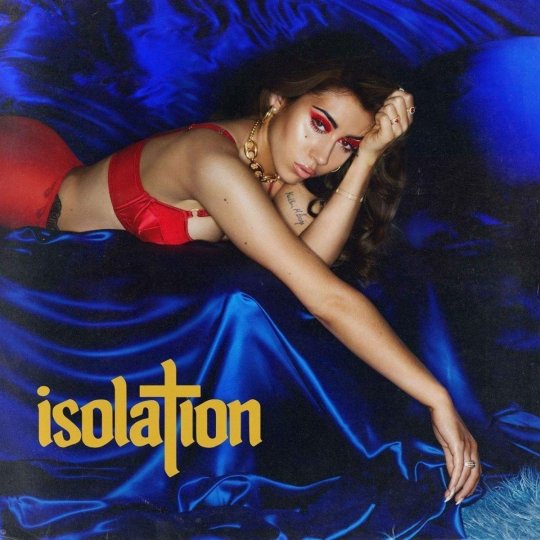
(Notice how even these pictures radiate a very similar glittery, retro glam aesthetic)
#vedic astrology#vedic astro notes#astro observations#astro notes#sidereal astrology#nakshatras#music astrology#astro beauty
321 notes
·
View notes
Text
qala and the style over substance argument
so, i watched qala (dir. by anvita dutt) immediately when it came out - a story that exposed the music industry and the position of women in it, especially focusing on the toxic nature of indian classical music? it was like they made the film for me (someone who's spent a good chunk of their life trained in hindustani classical music). however, i was sorely disappointed.
in essence, qala, along with other films that did commercially well that came out in bollywood last year, solidified my understanding that the audience of today's generation of movie-watchers genuinely puts style over substance and in fact, uses it as a way to defend their favourite movies from criticism. the recent resurgence of praise for om shanti om of all films, only strengthened this opinion.
my criticisms for qala are in plenty, yet i will choose to expand on the ones that strike out the most to me, all of which range from the lightest to the harshest criticism:
the choice of music
the acting
the direction + writing
the handling of the serious issues that are the main theme of the film
before you read ahead, please know that there are spoilers.
in indian classical music, there are two distinct forms: hindustani (or, north indian) and carnatic (or south indian) music. each have their differences and similarities and even someone who hasn't trained can tell them apart upon listening. within hindustani music - which is the genre of music that qala learns from her mother - you have many different styles of singing, ranging from shastriya sangeet (classical form of singing) to laghu sangeet (semi-classical and sometimes, light music). of course, this categorization also has its roots in religion and caste. shastriya sangeet has forms of singing like dhrupad (the oldest form and a strictly devotional medium), khyal (the most common one, telling tales or speaking of human emotions), bhajan (also a devotional medium), etc.
laghu sangeet has forms of classical music like the thumri, a form of singing popularized and invented by courtesans. the lyrics were sensual, romantic and more explicit. of course, owing to these, they were looked down upon. even the british had a huge role in diminishing the status of indian women performers. the "other woman" concept was specifically one that they propagated and the rise of the "perfect housewife" phenomena began since the seventeenth century. the extreme effect of that? the courtesans lost out on their patrons and were forced into prostitution.
hence, that was the primary history behind qala's mother, urmila, shaming her into never being a performer, i.e, in a more derogatory term, a "singing girl". a courtesan, essentially. which is accurate, considering the film is set in the 1940s. if a girl was too "out there in the world", i.e, her achievements being publicised in newspapers or her getting recognition for her academics, her future marital prospects were ruined. and the "shame" that befell the family if she was learning music or dance was worse. a significant number of the prominent female musicians that emerged from this era of pre-independence to post-independence were unmarried. or they had many patrons and salacious rumours regarding their love life were in plenty. the film pakeezah (1972) explores such themes quite well. and the many renditions and retellings of devdas also serve as a good example of the stature of performing women.
however, it's the music itself where it goes wrong for me. the choice of songs as well as qala's singing (of course, all of qala's songs are sung by the amazing sireesha bhagavatula), is in a style all too similar to laghu singing. the years of egregious training, no matter how much her mother dismissed her, would've developed a voice which would've sounded a lot more like what a lot of classical singers would sound like, unless they were singing a lighter form of singing. and it isn't a matter of pitch or using falsetto. qala's mom is referred to as a master of qawallis, which is a sufi form of devotional singing (and comes well under hindustani music too). even the lyrics of qala's songs, while full of very obvious foreshadowing, do not match the overall orthodox classical upbringing that the film portrays.
while bhagavatula has an amazing voice well versed in classical music (especially since she sings bhajans so often), considering the time that qala was set in, you would've expected a sound similar to something along the lines of noor jehan or even roshan ara begum. instead, it sounds a lot like a mix of semi-classical instrumental with a more pop-based voice. which is easier for our generation to digest and consume, however, it comes at the cost of a sound which is very typical of the 50s-70s era of bollywood.
one that qala does right are the costumes. they do their job well. not the sets as much, which i will get into later. at some points, they are well in line with the rest of the era of the film, other times it just sticks out like a sore thumb. here's where the "symbolism" comes in.
one of the most jarring examples is the song qala sings at the first performance, a very light classical song just by the sound of the vocals. even the song jagan sings is very contemporary at its core. despite the characters having an allegedly strict, traditional schooling of music (jagan's voice is devoid of the typical heavy accent or dialects that those who are from underprivileged backgrounds tends to have), the songs at hand present a very modern take on qawallis, despite bollywood being a flourishing ground for many iconic qawallis. therefore, the compositions sometimes falter at some points specifically because of the vocal choices. choosing to do away with alaaps, especially in qala's part, less aakar and more bariki, are all signficant details that feel jarring to someone who's lived in the world of classical music as long as qala. otherwise, there are some signature sounds retained from the era that the film is set in.
and while still on the topic of singing, a very important issue that i find least addressed is the acting of it. despite there being little vocal variations in the compositions, the actors don't show that they are singing. and in the film specifically revolving around music, that's an extremely important detail that i find amiss. hardly opening the mouth, the movement of the lips, the posture as well as the hand gestures (yes, a very important detail!), are all obvious flaws. a recent film that does that does those details well is the disciple (2020). the first scene of urmila teaching qala singing displays urmila wearing an elaborate piece of nose jewellery that covers half of her mouth, and that's when they're doing rehyaas (practice), not a performance. it's huge details like these that don't sell the film to me.
the acting is quite underwhelming and here is where disagreements with my opinions might enter. i find trupti dimri's rendition of qala extremely, for lack of politer words, exasperating. she tends to show the same expressions for all of her problems, i.e., there is no great difference between her feeling anger or feeling despair or feeling depressed or feeling cheated or just plain exhaustion. qala's character is a complex one and difficult to act, which is a concession i will give, however, the hype around her is a little unnerving when the audience is given such an unremarkable delivery of dialogues and emotion. it comes off as school-play acting at times. swastika mukherjee, who plays urmila, is quite two-note with her acting, which sometimes suits her character and sometimes just feels very low-effort. babil khan has his moments, yet there is such less versatility. you'd think the babil of qala's hallucinations and the one who existed in real life would have some distinct characteristics (which they do), but they never come off as that. it feels so half-hearted at times.
the whole point of symbolism is that it's subtle at heart and not on the face. qala has on-the-face symbolism, which is an irony in itself. the black swan scene, the frosty room in the beginning, the ghostly jagan, etc. almost made me bump my nose into a wall. it comes off as pretentious at best, as if the viewer is stupid. it is also very off-putting in some scenes. for example, the black swan scene - there is very little buildup and it feels very predictable in the sense that "it all goes downhill from here". however, there is one scene which i like, which is the gargoyle one (a very traumatic scene, for those who recall, it is the one right before ghodey pe sawaar gets recorded for the final time). i think that is the most effective filmmaking in the entire film. the best thing about symbolism is always the subtlety. it makes the viewer keep coming back to pick up on something they might have missed in the first watch, it helps them pick up the pieces along the way instead of being able to tell the twists thirty minutes before they are revealed.
and one of the most egregious crimes of the entire film is the direction. here is where we get a little more technical (but just briefly, do not worry). the way it cuts from one scene to the next is like watching a poorly edited reel put out by the team of an out-of-touch marketing firm. the editing could have been better at many places. the writing falls flat specifically when it comes to the characters. i'm pretty sure on paper, the script must've been a delight to read. the story has so much potential - considering that it's based on two books, where there might've been even more depth given to the characters - it isn't new in any way but it offers a different, feminist perspective of the indian music industry. yet, the characters are paper thin on screen - in their ambitions, psychology and sociology. hence, urmila suddenly turning a new leaf in the last ten minutes of the film is something that feels wrong, because all along, she has been portrayed as a heartless mother. qala's actions make sense because her character has nearly always been rooted in self pity and rage. jagan is nothing without music. there is very little dimension to them apart from me summarizing their characters in one sentence with less than thirty words each.
that is why, the film feels even more half-hearted when it speaks of the issues that it centers around. all of these elements add up and make for a tiring watch. i gave qala a second chance, to be fair and omitted some of my pettier criticisms, yet the more serious ones remain. to a certain extent, it does aestheticize depression, which i have a huge issue with. however, baby steps as always with bollywood. it's no dear zindagi considering it is set in a different period with a different ending. however, the writing of the characters could've been so much better. a little more exploration of urmila's intentions would've given her so much depth. a few more interactions between qala and jagan might've given qala the chance to befriend him and not just see him a rival, thus intensifying the decision she took. the characters do not feel human, they are strictly white or black and qala being the anti-hero feels very off since it requires better writing and a stronger plot. and of course, much better acting.
however, qala re-opened up discussion of a nearly-always forgotten discourse - that of the position of women in music. and for achieving that bare minimum, i give it full credit. however, when there have been films with much better writing, characterization and cinematography in bollywood itself, with a similar theme, qala needs to be seen for what it contains than what it displays. just because it glitters, doesn't mean it's gold.
#qala#qala film#qala bollywood#bollywood films#bollywood ott#ott films#tripti dimri#anvita dutt#bimal khan#swastika mukherjee#qala film review#harsh critique#style over substance#i apologize in advance if i went overboard#i really#really tried to be as objective as possible#do i want more female directors? yes i do. but will i say i dont like a female directed movie if i dont like it? yes i will.#i really like dutt's bulbul and dimri was better in that#but qala is definitely a weaker direction#i hope both of them improve bc i like the films dutt has written#dimri has potential too#maits.txt
27 notes
·
View notes
Text

The “Summer of Love” when caravans of young music fans, traveled from the north, the east and the south and converged on the Monterey County Fairgrounds in California on the weekend of June 16-18, 1967.
The Monterey Pop Festival was a groundbreaking event, bringing together nearly three dozen well-known and unknown acts representing an eclectic mix of styles and sounds. The great soul singer Otis Redding, the Indian sitar master Ravi Shankar and South African singer/trumpeter Hugh Masekala, for instance, all had their first significant exposure to a primarily white American audience that featured such well-known acts as the Animals, the Association, the Byrds, Jefferson Airplane, and the Mamas and the Papas.
By the end of the festival, Jimi Hendrix had vaulted into prominence, as had Janis Joplin, the electrifying singer who fronted Big Brother & the Holding Company in two separate performances over the weekend. No one was quite aware of it at the time, but Monterey Pop launched two of the most iconic performers in American musical history. In this sense, the festival not only pioneered the basic idea of a large-scale, multi-day rock festival, but it also provided the creative template that such festivals still follow to this day.
#monterey pop festival#love#music#music festival#summer#California#jimi hendrix#janis joplin#otis redding#summer of love#music legends#1960s#the animals#the byrds#the mamas and the papas#guitars#drums
22 notes
·
View notes
Text
Based on the information provided in the search results, here is a list of the top 20 cultures of all time and explanations for their inclusion:
1. Italian Culture - Renowned for its rich Renaissance art, architecture, and cuisine, Italy has a deeply influential and historic culture that has shaped Western civilization.
2. Chinese Culture - One of the oldest and most enduring cultures in the world, Chinese culture has had a profound impact on art, philosophy, language, and traditional values across Asia.
3. Japanese Culture - Unique and prominent, Japanese culture has evolved over centuries, blending traditional practices with modern influences, and is known for its art, architecture, and traditions.
4. Indian Culture - Diverse and ancient, Indian culture is shaped by Hinduism, Buddhism, and other religions, and is renowned for its art, music, literature, and traditional customs.
5. Egyptian Culture - The ancient Egyptian civilization developed one of the earliest and most influential cultures, leaving a lasting legacy in areas like architecture, religion, and mythology.
6. Greek Culture - Classical Greek culture made seminal contributions to Western civilization in philosophy, art, architecture, science, and democracy.
7. Mexican Culture - A vibrant blend of indigenous, Spanish, and modern influences, Mexican culture is celebrated for its art, music, cuisine, and rich traditions.
8. Mayan Culture - The advanced Mayan civilization developed a sophisticated culture with impressive achievements in mathematics, astronomy, and architecture.
9. Aztec Culture - The Aztec Empire created a complex, influential culture marked by advanced urban planning, religious practices, and a distinctive artistic style.
10. Mesopotamian Culture - One of the earliest civilizations, Mesopotamia developed a culture that made groundbreaking contributions to writing, law, and urban development.
11. Incan Culture - The Inca Empire built a remarkable culture with impressive engineering feats, a complex social structure, and a rich tradition of textiles and art.
12. Polynesian Culture - The diverse cultures of Polynesia, including Hawaii, New Zealand, and other Pacific islands, are known for their unique art, music, and traditional practices.
13. Native American Cultures - The indigenous cultures of North and South America have a long history and diverse traditions, including art, storytelling, and spiritual beliefs.
14. African Cultures - The African continent is home to countless vibrant and diverse cultures, each with their own unique languages, arts, and customs.
15. Australian Aboriginal Culture - The world's oldest continuous culture, Australian Aboriginal people have a rich heritage of art, music, and traditional practices.
16. Russian Culture - Deeply influenced by its Orthodox Christian heritage, Russian culture has made significant contributions to literature, music, art, and philosophy.
17. Brazilian Culture - A melting pot of indigenous, European, and African influences, Brazilian culture is renowned for its music, dance, carnival celebrations, and diverse cuisine.
18. Thai Culture - Shaped by Buddhism and a long history, Thai culture is celebrated for its ornate temples, traditional arts, and unique culinary traditions.
19. Korean Culture - The culture of South Korea and North Korea has evolved over centuries, with a strong emphasis on Confucianism, traditional arts, and modern pop culture.
20. Turkish Culture - Bridging Europe and Asia, Turkish culture is a synthesis of Ottoman, Islamic, and Anatolian influences, reflected in its architecture, cuisine, and rich history.
These cultures have been included in the list due to their significant impact on human civilization, their enduring legacies, and their unique contributions to art, philosophy, religion, and the overall human experience.
Sources
[1] Top 28 Cultures of the World - Mars Translation https://www.marstranslation.com/blog/top-28-cultures-of-the-world
[2] 20 Fascinating Cultural Traditions Around the World - Day Translations https://www.daytranslations.com/blog/20-traditions-around-the-world/
[3] The World's 20 Best Cities for Culture Right Now - TimeOut https://www.timeout.com/travel/worlds-best-cities-for-culture
[4] 24 Different Cultural Traditions Around the World - Tomedes https://www.tomedes.com/translator-hub/24-cultural-traditions-around-world

0 notes
Text
Introducing Kottaram, Nottingham's Culinary Gem – The Best Rated Restaurants in Nottingham

With its delicious food and excellent service, Kottaram the Best Rated Restaurants in Nottingham, which is centrally located in the city, is a popular destination for both locals and visitors. Thanks to its genuine Indian food and hospitable ambiance, Kottaram—one of Nottingham's top restaurants with the highest ratings—has earned its rightful place in the dining scene. Discover the causes of this gem's brightness by visiting Nottingham amid the city's flourishing dining scene. One of Nottingham's top restaurants, Kottaram, instantly transports your senses on a gastronomic journey across all of India's many regions. Every cuisine is a labor of love that has been meticulously created, from the strong spices of the North to the delicate flavors of the South.
Being genuine is more than just a slogan at Kottaram, the highest-rated restaurant in Nottingham. The cooks, who are from various regions of India, bring with them time-honored recipes and cooking techniques. Every dish is prepared with the utmost respect for tradition, ensuring that every bite is an authentic portrayal of India's rich culinary heritage, from the aromatic biryanis to the smokey tandoori kebabs.
Eating satisfies hunger and stimulates the senses at the same time. The vibrant colours of the food, the delicious aromas emanating from the kitchen, and the upbeat beats of Indian music all combine to create a lively and welcoming atmosphere. With each trip to Kottaram, Enjoy a multisensory adventure at Nottingham's top-rated restaurant, perfect for celebrating a special event or treating yourself to something nice during the workday. Above and above the delicious food and cozy atmosphere, Kottaram's excellent service is what really makes it stand out among Nottingham's top restaurants. Warm smiles and attentive hospitality await you as soon as you walk through the door. The staff goes above and beyond to make sure your meal is nothing short of amazing, attending to all of your needs with style and expertise.
One of the best-rated restaurants in Nottingham, Kottaram, caters to customers seeking more than simply a meal by providing food enthusiasts with an insight into the intricate art of Indian cooking through cooking courses and tasting sessions. Skilled chefs lead these immersive events that give customers a deep grasp of Indian culinary practices and a chance to learn the processes behind their favorite dishes firsthand. It should come as no surprise that Kottaram has garnered numerous honors throughout the years, confirming its standing as the top restaurant in Nottingham. Kottaram has received widespread recognition for its outstanding food, service, and ambience from reviewers and customers alike, ranging from local magazines to esteemed culinary guides.
Kottaram is a gastronomic destination that stands out among other cities, drawing foodies from near and far to experience an unparalleled culinary journey. As Nottingham's top dining destination, Kottaram has earned it with its genuine cuisine, welcoming atmosphere, and faultless service. Therefore, the next time you're itching for Indian food, head to Kottaram, of the best-rated restaurants in Nottingham , and be ready to be amazed.
#Best restaurants in Nottingham#Indian restaurants in Nottingham#Best Indian restaurants in Nottingham#Restaurants Nottingham city centre#Best curry house in Nottingham#Indian restaurant Nottingham city centre#Best south Indian restaurants in Nottingham#Top restaurants in Nottingham#Best rated restaurants in Nottingham#10 Best Restaurants & Places to Eat in Nottingham
0 notes
Text
Embracing Diversity in Hindu Matrimony.
In the rich tapestry of Hindu culture, the concept of marriage holds a significant place. It's not merely a union of two individuals but a merging of families, traditions, and values. In recent times, there has been a growing recognition of the importance of embracing diversity within Hindu matrimony. This shift towards inclusivity reflects the evolving nature of society and the desire to celebrate differences rather than letting them divide us.

Diversity in Hindu matrimony encompasses various aspects, including regional, linguistic, cultural, and even religious differences. With Hindus residing in different parts of the world, from India to Fiji to the United States, the spectrum of diversity within the community is vast and vibrant. Each region brings its unique customs, rituals, and flavors to the matrimonial landscape, adding depth and richness to the institution of marriage.
One of the most beautiful aspects of embracing diversity in Hindu matrimony is the celebration of different customs and traditions. Whether it's the colorful rituals of a South Indian wedding, the grandeur of a North Indian ceremony, or the simplicity of a Gujarati wedding, each tradition has its charm and significance. Instead of imposing one set of customs as the norm, there is a growing acceptance of diverse practices, allowing couples to honor their roots while forging new traditions together.
Language is another facet of diversity that adds layers of richness to Hindu matrimony. With hundreds of languages spoken across India and among Hindu diaspora communities, language diversity is inevitable. Bilingual or multilingual weddings are becoming increasingly common, with couples incorporating vows and rituals in multiple languages to accommodate both families. This linguistic diversity not only reflects the multicultural fabric of Hindu society but also serves as a bridge connecting people from different backgrounds.
Cultural diversity within Hindu matrimony extends beyond rituals and languages to include food, attire, and music. From the sumptuous delicacies of Punjabi cuisine to the intricate silk sarees of Kanchipuram, every cultural element contributes to the kaleidoscope of experiences in a Hindu wedding. Embracing this diversity means opening up to new flavors, styles, and sounds, thereby enriching the matrimonial journey with shared experiences and mutual appreciation.
In the realm of Hindu matrimony, religious diversity is also a reality that cannot be ignored. While Hinduism is often perceived as a monolithic faith, it encompasses a wide range of beliefs, practices, and sects. Intersectarian marriages, where individuals from different sects of Hinduism come together, are increasingly common. This trend reflects a broader shift towards religious pluralism within Hindu society, where love and respect transcend sectarian boundaries.
Embracing diversity in Hindu matrimony is not without its challenges. Differences in customs, traditions, and beliefs can sometimes lead to misunderstandings or conflicts within families. However, the key lies in open communication, mutual respect, and a willingness to learn and adapt. By fostering an environment of acceptance and inclusivity, couples can navigate these differences with grace and understanding, thereby strengthening their bond and enriching their journey together.
In conclusion, embracing diversity in Hindu matrimony is not just a trend but a reflection of the evolving dynamics of society. It is a celebration of the myriad colors, flavors, and melodies that make up the tapestry of Hindu culture. By embracing diversity, couples can create weddings that are not only beautiful and meaningful but also inclusive and enriching for all involved. As we continue on this journey, let us cherish the diversity that makes Hindu matrimony truly special and embrace the beauty of unity in diversity.
0 notes
Text
Romantic Restaurants In Mumbai
Whether it's a rooftop candlelight dinner or a beachside brunch, your romantic date with your spouse should be unforgettable. Needless to say, despite the city's turmoil, romantic restaurants in Mumbai deliver if you're looking for the ideal date. With Valentine's Day approaching, it's time to prioritise planning the perfect date to create a lasting experience with your significant other. The following are some of the Romantic restaurants in Mumbai that will help you accomplish just that
Checkout Best Restaurants in Mumbai For Couples :
Celini – Grand Hyatt
This Mumbai-based home-style Italian restaurant celebrates traditional Italian cuisine while adapting them for a modern audience. The interior design of Celini Mumbai is basic and modern, and it emits a subtle charm. This Mumbai restaurant features a charcoal BBQ, rotisserie, and wood-fired pizza oven, as well as a large selection of gourmet wines and a variety of seating options including table booths and lounges.
Lotus Café – JW Marriott
At this premium dining establishment in Mumbai, enjoy the flavours of great cuisine while admiring the refreshing beauty of a blossoming lotus pond. This international restaurant is open 24/7, so you may eat whenever you want!
Visit this romantic restaurant in Mumbai with your special someone for scrumptious food and a diverse menu. Overall, Lotus Cafe is sure to become a favourite spot for you to plan the ideal date.
The Bayview Restaurant – Marine Plaza
This top-tier restaurant is unquestionably one of the most romantic in Mumbai. This restaurant offers a calm supper with your significant other, combining the charm of the sea with the tranquillity of candlelight dinners.
This restaurant, which is open 24 hours a day, provides both a substantial meal and a nice dining experience. The cuisine strikes an excellent mix between North Indian, Mughlai, and fast food, providing something for everyone.
Gallops, Mahalakshmi
Gallops, located in the heart of South Bombay, overlooks the Mahalaxmi Race Course on one side and lush greenery on the other. If it weren't for the fairy-lit tree canopies, you and your date could have a beautiful meal under the stars in this 37-year-old restaurant's newly constructed al fresco seating area. Gallops' delicious seafood, North Indian, and Continental spread will ensure that you and your date have a fantastic time savouring their favourite foods.
AER Rooftop Bar, Worli
Located on the top floor of the renowned Four Seasons Hotel, AER is where your date must be. This is if you want to make a good long-lasting impression. AER from the Four Seasons is one of Mumbai’s best rooftop restaurants. Whether you want to relax and listen to live music while dining with special someone or view the iconic cityscape of Mumbai, AER is where you can live these moments. It offers an excellent view of the surroundings and a great party environment with multiple cuisines.
Gadda Da Vida, Juhu
Gadda Da Vida features a separate dining and entertainment space with the best sea views in the neighbourhood. It is surrounded by towering and imposing pines and has a fantastic ambience. This is one of the greatest restaurants for couples in Mumbai, so take advantage of the DJ service while enjoying the delicious food! Gadda Da Vida is a fantastic choice for those planning a private dinner date in Mumbai, as it is also one of the city's best hangouts.
0 notes
Text
Exploring London's Culinary Gems with Top Indian Restaurants in London
London is a city that's famous for having a diverse range of cultures and cuisines. One type of food that Londoners really love is Indian food, and there are loads of great Indian restaurants in the city. Whether you're an expert on curries or you're trying Indian food for the first time, you're bound to enjoy the experience. We're going to explore the best Indian restaurants in London and take a closer look at the vegetarian options they offer.
The Rich Tapestry of Indian Cuisine in London
Indian cuisine is incredibly diverse, with a myriad of regional flavors, spices, and cooking styles. From the fiery curries of the South to the delicate biryanis of the North, Indian restaurants in London offer a gastronomic journey through the subcontinent. London's Indian restaurant scene is not just about chicken tikka and butter chicken. It's about the tantalizing flavors of street food, the aroma of spices, and the comfort of a hearty meal.
One such culinary gem that stands out is Chokhi Dhani London, a restaurant that's celebrated for its authenticity, charm, and exceptional vegetarian offerings.
Chokhi Dhani: A Slice of Rajasthan in London
Nestled in the heart of London, Chokhi Dhani is an oasis of Rajasthani hospitality and cuisine. With its rustic decor, warm ambiance, and traditional elements, a visit to Chokhi Dhani is like a journey to the royal state of Rajasthan, India. The restaurant's name translates to "Fine Hamlet" in Hindi, and it truly lives up to its name.
Chokhi Dhani's menu is a tribute to the culinary heritage of Rajasthan. While Rajasthan is known for its royal feasts and meaty dishes, Chokhi Dhani takes it a step further by offering a wide range of vegetarian delights. From the savory Dal Baati Churma to the flavorful Gatte Ki Sabzi, the restaurant showcases the vegetarian side of Indian cuisine.
Vegetarian Restaurant in London
For those seeking vegetarian options in London, Chokhi Dhani stands out as an authentic and welcoming choice. Vegetarianism has a strong presence in Indian culture, and Chokhi Dhani honors this tradition with its exquisite vegetarian menu. From the moment you step in, you'll be greeted with the inviting aroma of spices, and the menu is a testament to the richness of vegetarian Indian cooking.
The Aloo Tikki, crispy potato patties, and the Paneer Tikka, marinated and grilled cottage cheese, are perfect starters to tantalize your taste buds. The main course offers an array of options like the Bhindi Do Pyaza, a tangy okra dish, and the Kadhi Pakora, a gram flour dumpling in spiced yogurt, served with rice.
But what truly sets Chokhi Dhani apart is its Rajasthani Thali, a royal feast that's a perfect representation of Indian hospitality. Served on a traditional silver platter, the thali includes an assortment of curries, bread, rice, and condiments. It's a delightful experience for any vegetarian food enthusiast.
The Chokhi Dhani Experience
Beyond its delectable food, Chokhi Dhani offers an experience that's second to none. The restaurant frequently hosts live music, cultural performances, and events, providing diners with a glimpse into the rich traditions of Rajasthan. You can enjoy traditional folk dances, puppet shows, and the soul-stirring tunes of the tabla and sitar while savoring your meal.
Conclusion
In a city that celebrates diversity, Indian cuisine is a vibrant thread in London's culinary tapestry. Whether you're a vegetarian or simply looking for an unforgettable dining experience, London's Indian restaurants, particularly Chokhi Dhani, offer an enticing journey through the flavors of India. The restaurant's dedication to authenticity, charm, and exceptional vegetarian options make it a standout choice for anyone seeking a slice of Rajasthan in the heart of London.
So, the next time you're in London and craving the flavors of India, make your way to Chokhi Dhani for a memorable vegetarian dining experience that will transport you to the heart of Rajasthan.
London's culinary gems are waiting to be explored, and the vegetarian delights at Chokhi Dhani promise an unforgettable gastronomic journey. Don't miss the opportunity to savor the tastes of India right in the heart of London.
0 notes
Text
Contemporary Mehendi
Introduction
In the world of body art, Mehendi has emerged as a timeless tradition that transcends cultural boundaries. Originating from ancient practices in South Asia and North Africa, Mehendi has evolved into a global phenomenon. This blog will explore the vibrant world of contemporary Mehendi, highlighting the fusion of tradition and modern trends that define this captivating art form.
The Evolution of Mehendi in the Modern World
Mehendi, also known as henna, has undergone a remarkable transformation over the years. What was once a cultural and ceremonial practice has evolved into a mainstream form of self-expression and creativity. In contemporary times, Mehendi has become a versatile art form, with artists and enthusiasts pushing the boundaries of traditional designs to create something uniquely modern.
Social Media and the Globalization of Mehendi
The advent of social media platforms has played a pivotal role in the globalization of Mehendi. Instagram, Pinterest, and TikTok have become virtual galleries where Mehendi artists from around the world showcase their innovative designs. This global exposure has led to the cross-pollination of styles, with artists drawing inspiration from diverse cultural influences. The accessibility of tutorials and inspiration online has empowered individuals to experiment with Mehendi in unprecedented ways.
Innovative Techniques in Contemporary Mehendi
Traditional Mehendi involves the application of henna paste using cones or brushes, resulting in intricate, temporary designs on the skin. However, contemporary Mehendi has introduced innovative techniques that go beyond the conventional. White henna, glitter embellishments, and even the use of adhesive stencils have become popular choices for those seeking a modern twist. These techniques not only add flair to Mehendi but also extend its longevity and appeal.
The Fusion of Cultures in Mehendi Designs
Contemporary Mehendi is a melting pot of cultural influences. Artists are increasingly incorporating elements from different traditions, creating fusion designs that celebrate diversity. For example, Mehendi designs may seamlessly blend Indian paisleys with Moroccan geometric patterns or incorporate motifs inspired by African art. This cultural fusion not only reflects the interconnectedness of the global community but also fosters a deeper appreciation for diverse artistic expressions.
Mehendi as a Form of Self-Expression
In the contemporary landscape, Mehendi has transcended its traditional role as a ceremonial art form. It has become a powerful medium for self-expression, allowing individuals to convey their personality, beliefs, and experiences through intricate designs. Mehendi tattoos featuring quotes, symbols, and personal narratives have become increasingly popular, turning the body into a canvas for storytelling.
Celebrity Endorsement and Mehendi Trends
The influence of celebrities on popular culture extends to Mehendi trends. Red carpet events, music festivals, and social media posts featuring celebrities adorned with elaborate Mehendi designs often spark trends that captivate enthusiasts worldwide. From minimalist designs to bold, avant-garde patterns, Mehendi trends are shaped by the creative choices of influential figures, contributing to the ever-evolving nature of this art form.
Mehendi in Special Occasions and Celebrations
While Mehendi has become a year-round form of expression, it continues to hold a special place in celebrations and ceremonies. Weddings, in particular, showcase the grandeur and creativity of Mehendi designs. Brides often opt for personalized Mehendi that tells their unique love story, incorporates significant symbols, or even portrays elements of their cultural heritage. Additionally, Mehendi has become a popular choice for celebrations like baby showers, birthdays, and festivals, further cementing its status as a versatile art form.
Mehendi Festivals and Global Gatherings
The rising popularity of Mehendi has given birth to Mehendi festivals and global gatherings where enthusiasts and artists come together to celebrate their shared passion. These events feature live demonstrations, workshops, and competitions, providing a platform for artists to showcase their skills and exchange ideas. Mehendi festivals contribute to the sense of community among enthusiasts and foster the growth of this vibrant subculture.
Challenges and Controversies in Contemporary Mehendi
As Mehendi gains global popularity, it also faces challenges and controversies. The commercialization of Mehendi has led to concerns about the authenticity and quality of henna products. Moreover, issues of cultural appropriation arise as Mehendi becomes fashionable in cultures where it holds no traditional significance. Navigating these challenges is crucial to ensuring that the essence of Mehendi, rooted in cultural richness and symbolism, is preserved amid its evolving global presence.
Mehendi and Sustainability
In the wake of increasing environmental consciousness, there is a growing awareness of the ecological impact of Mehendi. Traditional Mehendi paste is made from the leaves of the henna plant, and sustainable harvesting practices are essential to its long-term availability. Moreover, artists and enthusiasts are exploring eco-friendly alternatives and advocating for ethical sourcing to minimize the environmental footprint of Mehendi.
Conclusion: The Timeless Appeal of Contemporary Mehendi
In conclusion, contemporary Mehendi represents a harmonious blend of tradition and modernity. From innovative techniques and cultural fusions to its role in personal expression and global celebrations, Mehendi continues to captivate people around the world. As this ancient art form evolves, it carries with it the essence of cultural diversity, self-expression, and the timeless allure of intricate designs on the canvas of the human body. The journey of Mehendi, from its traditional roots to its contemporary heights, is a testament to the enduring beauty of cultural practices in a rapidly changing world.
0 notes
Text
Captivating Rhythms and Timeless Elegance - Exploring The Beauty of Classical Dance
Classical dance is a bulwark of tradition, grace, and storytelling in the age of performing arts. Classical dance styles, which have a deep cultural background and captivate audiences with their precise movements, passionate emotions, and timeless stories, have endured time. We set out on a journey to explore the world of classical dancing in this blog post, learning about its significance, history, and enduring fascination. More than merely a choreographed show, classical dance is an aesthetic genre that communicates narratives, emotions, and cultural values. These dances have been developed and refined over ages and are frequently handed down through families. By displaying the customs and values of the communities they came from, they act as a window into the past.
Diverse Forms of Classical Dance -
Around the world, numerous cultures have developed their own distinctive styles, gestures, and musical accompaniments for classical dance. Among the most well-known classical dance styles are:
Bharatnatyam - With its roots in the southern region of India, Bharatanatyam is distinguished by its rhythmic footwork, complex hand gestures (mudras), and sophisticated face expressions that communicate mythological tales and spiritual ideals.
Kathak - Kathak is an Indian dance form with roots in the north that focuses on narrating stories with sophisticated hand and foot gestures. It possesses a distinctive fusion of Hindu and Muslim influences.
Kathakali from Kerala - Popular in the South Indian state of Kerala, kathakali is an advanced dance style. Through captivating footwork and expressive gestures, this Indian traditional dance tells stories.
Visit site - https://dancewithsaloni.com/quotes-on-classical-dance/
1 note
·
View note
Video
youtube
Devdasi Tradition In India | How Women Turned Prostitutes
Devdasi Tradition In India| How Women Turned Prostitutes Devdasi Tradition in India is a religious practice. In this system, young girls are offered to the deity and when they reach adolescence, they were forced to perform sexual duties for the deities. This custom was started somewhere in the 6th to 13th century. At that time, they were part of these religious practices and were highly respected in the society. The Devdasi tradition in India was known by various names in different regions such as Devdasis in South India, Maharis in Odisha, and Baijis in some parts of North India. These women were dedicated to serving the temple gods through their music and dance and were trained in classical dance forms like Bharatnatyam, Odissi, and other regional dance styles. During festivals, they performed in front of goddesses and served them by worshiping the deities every day. They traditionally enjoyed a high status in society as music and dance were integral parts of worship in temples and were treated as the goddesses of Laxmi. But over a period of time, everything changed, and the whole concept of the Devdasi tradition in India has changed so far. Later, after the involvement of Mughals and Britishers in the country, many temples were broken and their status in the society converted from Goddess Laxmi to child sex workers or sex slaves. They were exploited by temple priests and upper-class people. Now, they have become the official property of temples and are known as the prostitutes of gods. There are many misconceptions about this harsh tradition, Some people believe that it came from Andhra Pradesh but some of them believe that they can protect their family or village from evil by offering their young daughters to the temple deity. The first legal initiative to outlaw the Devdasi tradition in India was in 1934 Bombay Devdasi Protection Act which made to dedication of women illegal whether consensual or not. Then in 1947, when India gained independence, the Madras Devdasi (Prevention of Dedication) Act was outlawed in the southern Madras Presidency. Sadly, it is still practiced in India. the Indian National Commission for Women gathered data about the Devdasi culture in different states. Thus, the government of Odisha claimed that the Devdasi tradition in India is not common in their state as there is only one Devdasi, Sashimoni who was attached to Jagnnath temple had died in 2015. Similarly, the government of Tamil Nadu stated that they have abolished the Devdasi tradition in India. In Andhra Pradesh, they have identified 16,624 Devdasis. In Karnataka, the Karnataka State Women's University found more than 80,000 devadasis in 2018, while a government study in 2008 found 40,600. Whereas, the government of Maharashtra did not provide the information requested by the commission. We can not even imagine the situation of these devadasis who have gone through this disgusting custom.
0 notes
Text
Top 10 Indian Restaurants in Minneapolis - Authentic Cuisine and Cozy Ambience
Introduction:
Discover the vibrant Indian culinary scene in Minneapolis, where a sizable Indian community has led to an abundance of eateries serving authentic, home-style cuisine. If you're longing for a taste of India or seeking a new dining experience, explore the top ten Indian restaurants in Minneapolis that promise delightful dishes and welcoming atmospheres.
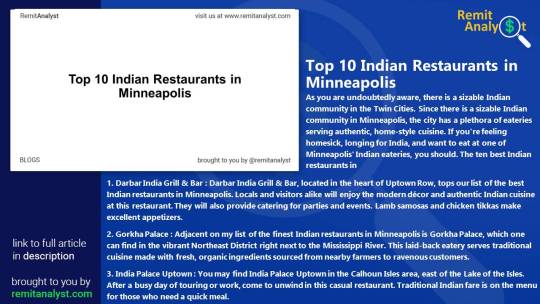
Darbar India Grill & Bar:
Situated in the heart of Uptown Row, Darbar India Grill & Bar secures the top spot on our list. This restaurant offers a modern ambiance and serves authentic Indian cuisine that pleases both locals and visitors. Don't miss their delectable Lamb Samosas and succulent Chicken Tikkas, and consider their catering services for special occasions and events.
Gorkha Palace:
Nestled in the vibrant Northeast District by the Mississippi River, Gorkha Palace is a laid-back eatery known for its traditional dishes prepared with fresh, organic ingredients from nearby farmers. Prepare your taste buds for an unforgettable experience.
India Palace Uptown:
Located in the Calhoun Isles area, east of the Lake of the Isles, India Palace Uptown is the go-to spot for those seeking quick and traditional Indian fare. Emphasizing healthy eating, the menu offers numerous vegetarian options to choose from.
Dancing Ganesha:
Just a stone's throw away from the Orpheum Theatre, Dancing Ganesha introduces a contemporary twist to Indian cuisine. Families love the cheery ambiance, and you must try the Shrimp Vindaloo, Boti Kebab, Vegetable Nilgiri, and Lamb Tikka Masala for an unforgettable dining experience.
Gandhi Mahal Restaurant:
With a scenic river view, Gandhi Mahal Restaurant provides a relaxed setting to enjoy seasonal, locally sourced Indian cuisine. The cozy atmosphere and live music performances every day add to the delightful dining experience.
Jewel Of India:
Discover the cozy setting of Jewel Of India in the Bohemian Flats area, perfect for relishing authentic Indian fare next to a beautiful fireplace. Don't miss the Fish Tikka Masala, Mutton Curry, Tandoori Shrimp, and Malai Kofta for a memorable meal.
Namaste Cafe:
Situated just three minutes south of the historic Purcell-Cutts House, Namaste Cafe is widely regarded as one of the most incredible Indian eateries in Minneapolis. Housed in a restored Victorian mansion, the restaurant offers a welcoming vibe, complemented by a serene garden, fountain, terrace, and porch.
Aroma Indian Cuisine:
Located in the Oxboro Center, approximately 12 miles south of downtown Minneapolis, Aroma Indian Cuisine exudes a relaxed and lively atmosphere. The chefs craft innovative takes on traditional North, South, and East Indian meals using the finest spices and ingredients.
Himalayan Restaurant:
Immerse yourself in a diverse culinary experience at Himalayan Restaurant, located in Minneapolis's Longfellow area. Savor a wide variety of Indian, Tibetan, and Nepalese specialties in a laid-back setting alongside the river. Their regular lunch buffet is a highlight not to be missed.
Kumar's:
Venture into the delights of South Indian cuisine at Kumar's in Apple Valley. While Northern Indian cuisine is well-known, Kumar's proudly brings the rich flavors of South India to Minneapolis, featuring aromatic garam masala, curries, and scrumptious naan bread.
Conclusion:
For a delightful dining journey through the rich flavors of India, Minneapolis offers an array of top-notch Indian restaurants. From traditional favorites to contemporary twists, each eatery promises a warm atmosphere and innovative menu options. Embark on a culinary exploration and try new restaurants with each visit to the Twin Cities.
#IndiansinMinneapolis#Indian Food in Minneapolis#Indian Restaurants in Minneapolis#Desi Food in Minneapolis
0 notes
Text
New video uploaded to my YouTube channel! This one took me a few days to research and create as there was such an important point of keeping it as authentic and true as possible. I did ask for help from my Grandma Biddy on some pronunciations of the words used as she was born in Goa. I didn’t grow up knowing a lot about Indian culture but I felt it was appropriate to mix both music and my ancestors beautiful culture together to help others learn.
To make my meditation videos more my own and personal, they will be heavily influenced by Indian culture. My mother is half Indian however I was brought up in a traditionally white household and was never taught anything about the history of my ancestors. I have decided to research and develop ideas about how the Indian culture and teachings could be portrayed in my therapy videos.
In traditional authentics, music has a place of primacy in Indian culture. It is often allegorised as ‘the food of the soul’, symbolising India’s remarkable diversity in cultural, linguistic and religious terms. It embodies the historical tides that have shaped its contemporary pluralism. Music is important in Hinduism as they say it arouses the senses and creates spiritual vibrations. They say it also encourages the expression of devotion to the spirit.
The approach used with Indian misc therapy is raga-based and produces changes in the body that relieve anxiety, effect relaxation, and bring about sleep. I will be using this Kind of music in all of my videos.
3 FEATURES OF INDIAN MUSIC - THE RAGAS, TALAS AND PALA
The ragas reiterate the at least five or more swaras (notes or micro notes) to form a baroque of melodious pieces or musical composition.
Carnatic Music - style associated with South India
Hindustani music - a style associated with North India
0 notes
Text
Make your Sangeet ceremony a unique & memorable moment
Evp Rajeswari Marriage Palace Kalyana mandapams in chennai (famously known as EVP Kalyana Mandapam) is inarguably not only one of the best wedding halls but also a landmark location in Chennai. EVP Palace is located in the posh area of Manappakkam near Chennai Trade Centre near DLF Building.
Facilities and Capacity
EVP Rajeswari palace stands taller and wider in the centre of the city and hence is easily accessible. The Palace has 7 main marriage halls The halls has elegant designs adorned with rich details to leave your guests with a feel-good factor. The high modern-style ceiling adds an openness to space. Large windows along the two walls of the hall give scope for ample natural light. The stage area is not only wide but also impressive due to the good lighting and Modern Carvings. As a result of these outstanding features, very Panoramic floor-to-ceiling view of the hall is simply amazing.
India and celebrations are synonyms. From weddings to birthdays, we go out of our way to pack as much joy, fun and celebration on special occasions as possible only at EVP Rajeswari Marriage Palace
Sashtiabthapoorthi – 60th birthday , Bheemaratha Shanthi – 70th birthday ,80th Birthday Sathabhishekam… are occasions to be celebrated in EVP Rajeswari Marriage Palace.
Make your loved ones to enjoy their special day in EVP Rajeswari Marriage halls in chennai . This place will bring joy and the beauty of the place will embrace the guest.
One of the safest place which makes your elders to walk freely with nature and to enjoy the beautiful trees and plants in the venue. Beautiful carving of statue will transform you into a photographer.
Indian weddings are popularly called the big fat Indian wedding. One factor that makes it big and fat is the amalgamation of rituals and traditions. The one ritual that is quite popular is the Sangeet ceremony. It is a ritual followed in North India and is also gaining popularity in South Indian marriages as well.… A perfect place will add to the experience. A good sound system and DJ will make the event the most enjoyable.
The excited nervousness is understandable considering how important this day is going to be for you. Selecting the right vendors is the first and most important step in planning a wedding. Out of this, choosing the right hall for your big day is critical as the hall sets the mood for the whole event. A good hall lends to the event the required ambience and grandeur. The musical night is not just a bonding between two families but also a bonding between the two families. It is an opportunity to break all barriers, mingle, and have all fun.
EVP Rajeswari Wedding Halls in chennai will serve as the best place for lawn sangeet ceremony. Make your Sangeet ceremony a unique & memorable moment.
There must be enough place for DJ and food. EVP Rajeswari Marriage Palace is the right place for a perfect Sangeet. Large open space in the event provides perfect location for DJ and Floor area.
0 notes
Text
Top tourist Attraction in Goa
When we are speaking about the uncharted place to explore, then Goa is it’s just opposite. Everyone just wishes to visit Goa once in their lifetime and after visiting the place everyone chants ‘Go Goa’. There are enormous things to do in Goa. It is no more a secret to anyone, that no matter the occasion may be, the travellers see Goa as a perfect destination to seek respite.
Why to select Goa as your Holiday destinations?
Goa is a must visit state whether you are from Goa or from any part of the world. Not just because it has beaches and tourist attractions but also because of the hospitality of the people living in Goa. The beautiful places and specially the natural scenes make it more interesting and exciting for the visitors. It is almost travelling to a new heaven as it seems completely different when you travel from the South part to the North.
Top tourist Attractions in Goa.
1) Anjuna Beach: It is one of the most recommended places to visit in Goa. Being one of the favourite hot beaches in Goa, Anjuna beach is laden with striking natural beauty and sprinkles of white sand. Isn’t sound interesting that there’s Bungee jumping from an 80ft tower, Paragliding and Wind surfing to up the ante for your visit to Anjuna.
2) Baga Beach: For Beach lovers, this could be considered as the best place in Goa. This is to be the most happening places in Goa, as it is best known for its Beach shacks and the enjoyable sea food. This Beach can be visited on Mackies Saturday night for some amazing shopping offers. Goa tourism always concerns Baga as travellers first choice for its perfect blend of night life and fun beaches.
3) Se Cathedral: Goa can also be known for its churches too. Se Cathedral is the oldest and amongst the most celebrated religious structures in Goa. Built in Portuguese Gothic Style.
4) Mandovi River cruise: A totally different and beautiful experience is gained at Mandovi River, especially during sunset. The cruise includes all types of entertainment such as music and dance, tourist end up partaking towards the end. There are full day cruise trips and dinner cruise trips available too.
5) Shri Mangueshi Temple: Moving towards a religious aspect, this lovely temple is dedicated to Lord Shiva. The temple has a certain type Goan Hindu style architecture, making the temple distinctive in its own special way. Thus, the place can be considered as the top tourist attractions in Goa.
6) Bhagwan Mahavir Wildlife Sanctuary: This sanctuary is mainly known for its leopards, elephants, deer and Indian Bison. This sanctuary is home to an array of wildlife. King Cobra is also found here in abundance, including variety of snakes etc. 200+ species of birds reside here.
7) Dudhsagar Waterfalls: Dudhsagar is among the India’s tallest 4-tired waterfall, being not easily accessible through private vehicles. The easiest access can be done through forest jeep which is hardly available in monsoons. Dudhsagar waterfall can also be considered as top Tourist attractions in Goa.



+91 81975 05650
0 notes